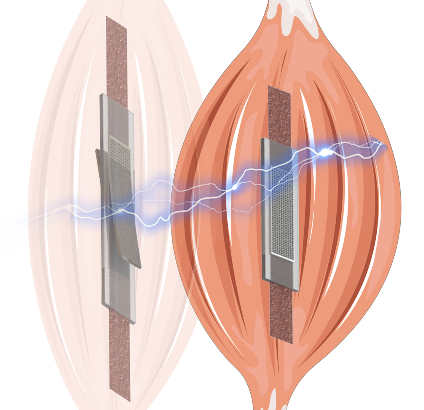
Image Credit: Queen Mary University of London
In addition to being necessary for increasing strength, muscle contraction hardening also facilitates quick reflexes in organisms.
The study team from Queen Mary’s School of Engineering and Materials Science has succeeded in developing an artificial muscle that smoothly switches between soft and hard states and also possesses the unique capacity to perceive forces and deformations, drawing inspiration from nature.
The lead researcher, Dr. Ketao Zhang, a lecturer at Queen Mary University of London, describes the significance of variable stiffness technology in artificial muscle-like actuators.
Empowering robots, especially those made from flexible materials, with self-sensing capabilities is a pivotal step towards true bionic intelligence.
Dr. Ketao Zhang, Study Lead Researcher and Lecturer, Queen Mary University of London
The researchers’ state-of-the-art synthetic muscle exhibits flexibility and stretchability similar to that of natural muscle, making it perfect for incorporation into complex soft robotic systems and customization to different geometric shapes.
This flexible actuator with a striped structure exhibits outstanding endurance by withstanding over 200% stretch along the length direction.
The artificial muscle can quickly vary its stiffness by applying various voltages, providing continuous modulation with a stiffness change of more than 30 times. In comparison to other types of artificial muscles, its voltage-driven design offers a significant advantage in terms of response time.
Additionally, this innovative technology can track its deformation through changes in resistance, eliminating the need for additional sensor configurations and streamlining the control system while lowering expenses.
This self-sensing artificial muscle was developed in an easy and dependable manner. The thin layered cathode, which also functions as the sensing component of the artificial muscle, is made of carbon nanotubes that have been consistently coated using a film applicator after being uniformly combined with liquid silicone using ultrasonic dispersion technology.
The actuation layer is sandwiched between the cathode and the anode, which is manufactured directly from a soft metal mesh cut. A fully self-sensing artificial muscle with variable stiffness is created after the liquid ingredients have cured.
This flexible variable stiffness technology has a wide range of possible uses, from soft robotics to the medical field. The seamless integration with the human body creates opportunities for helping sick or people with disabilities carry out necessary everyday chores.
Wearable robotic systems can monitor a patient’s actions and provide resistance by modifying stiffness levels, helping the restoration of muscular function during rehabilitation training. This is done by integrating the self-sensing artificial muscle.
Dr. Zhang added, “While there are still challenges to be addressed before these medical robots can be deployed in clinical settings, this research represents a crucial stride towards human-machine integration. It provides a blueprint for the future development of soft and wearable robots.”
A crucial turning point has been reached in the field of bionics due to the innovative study carried out by researchers at Queen Mary University of London. They opened the door for improvements in soft robotics and medical applications by creating self-sensing electric artificial muscles.
Journal Reference
Liu, C., et al. (2023) An Electric Self-Sensing and Variable-Stiffness Artificial Muscle. Advanced Intelligent Systems. doi:10.1002/aisy.202300131.